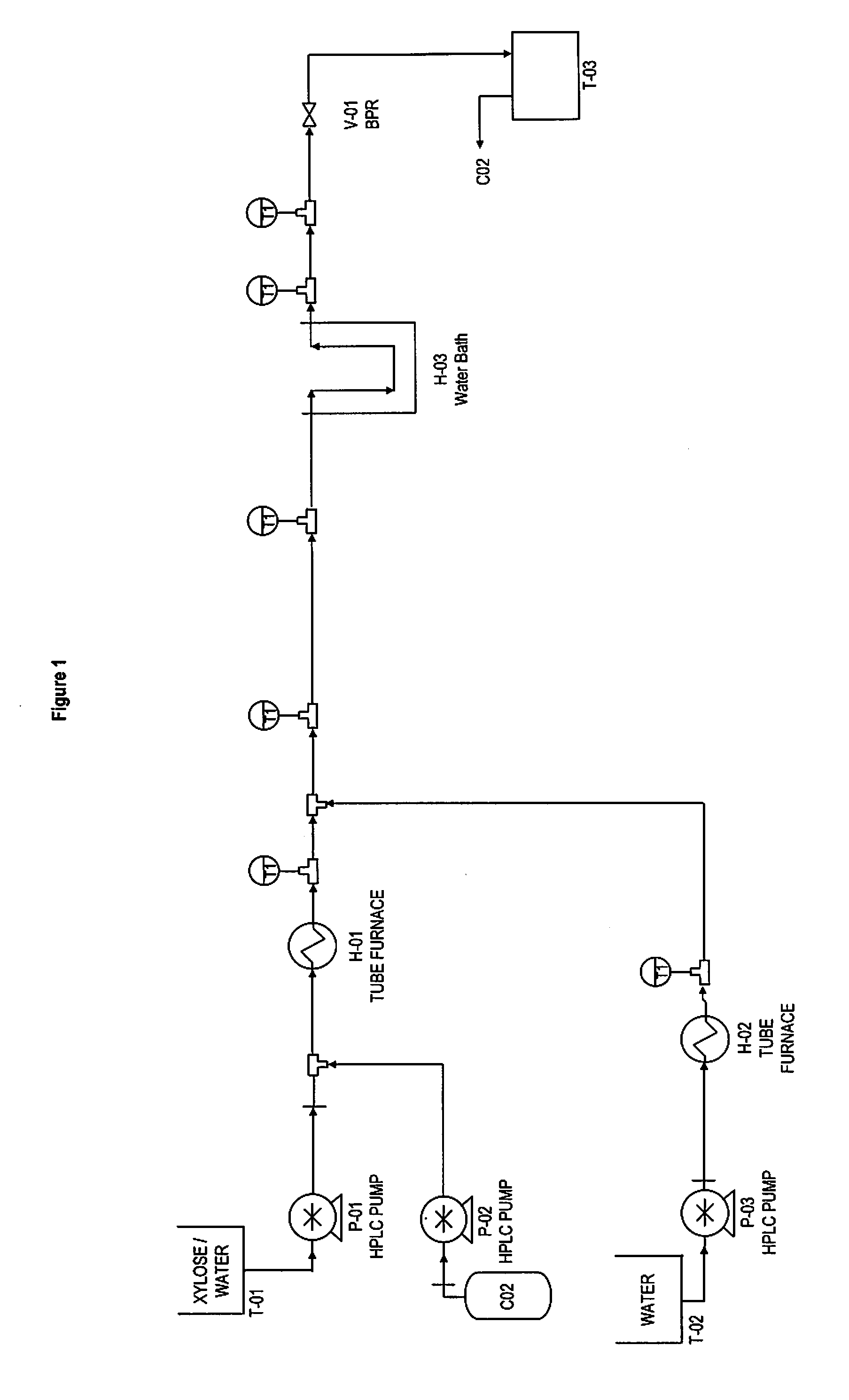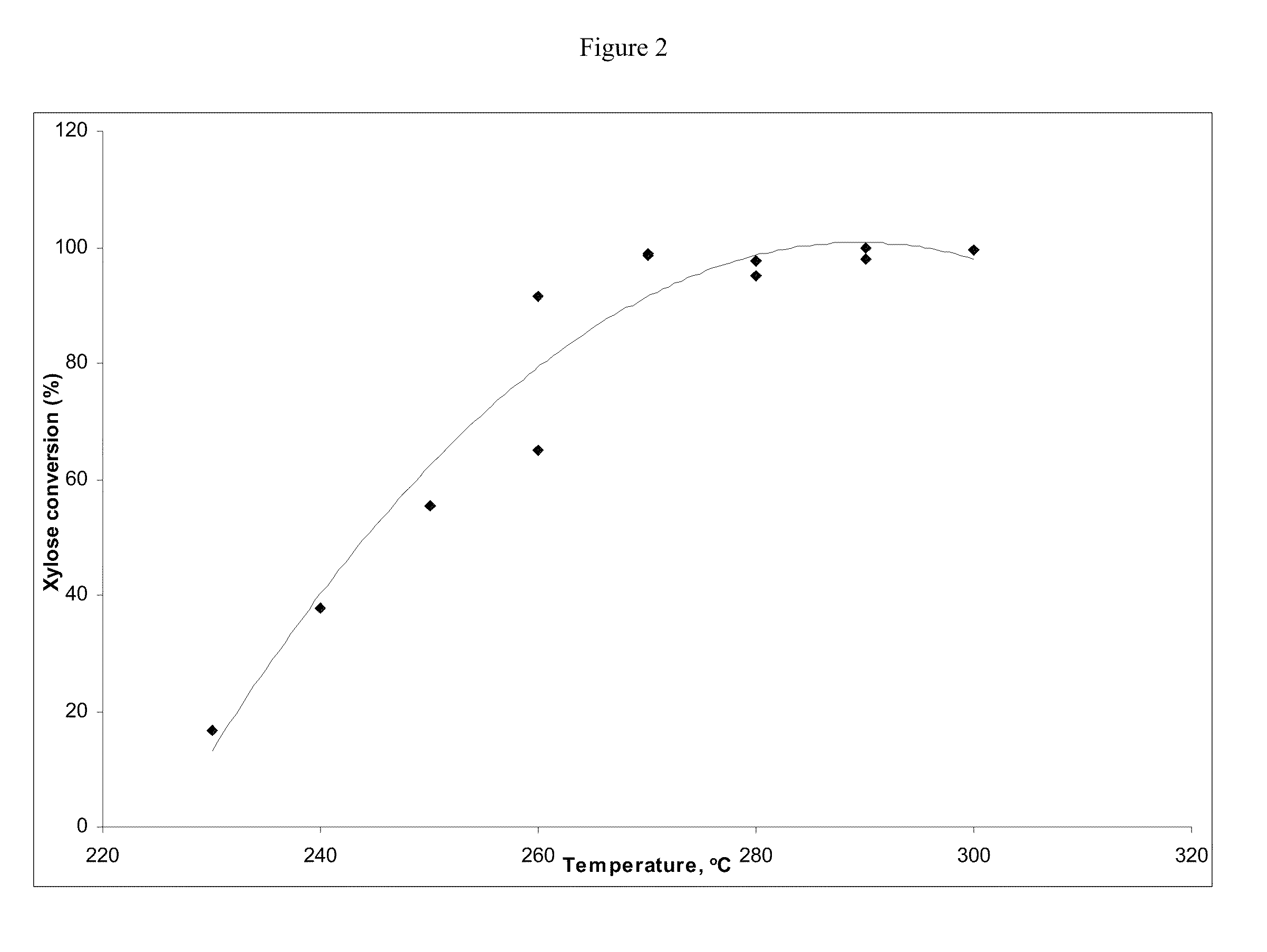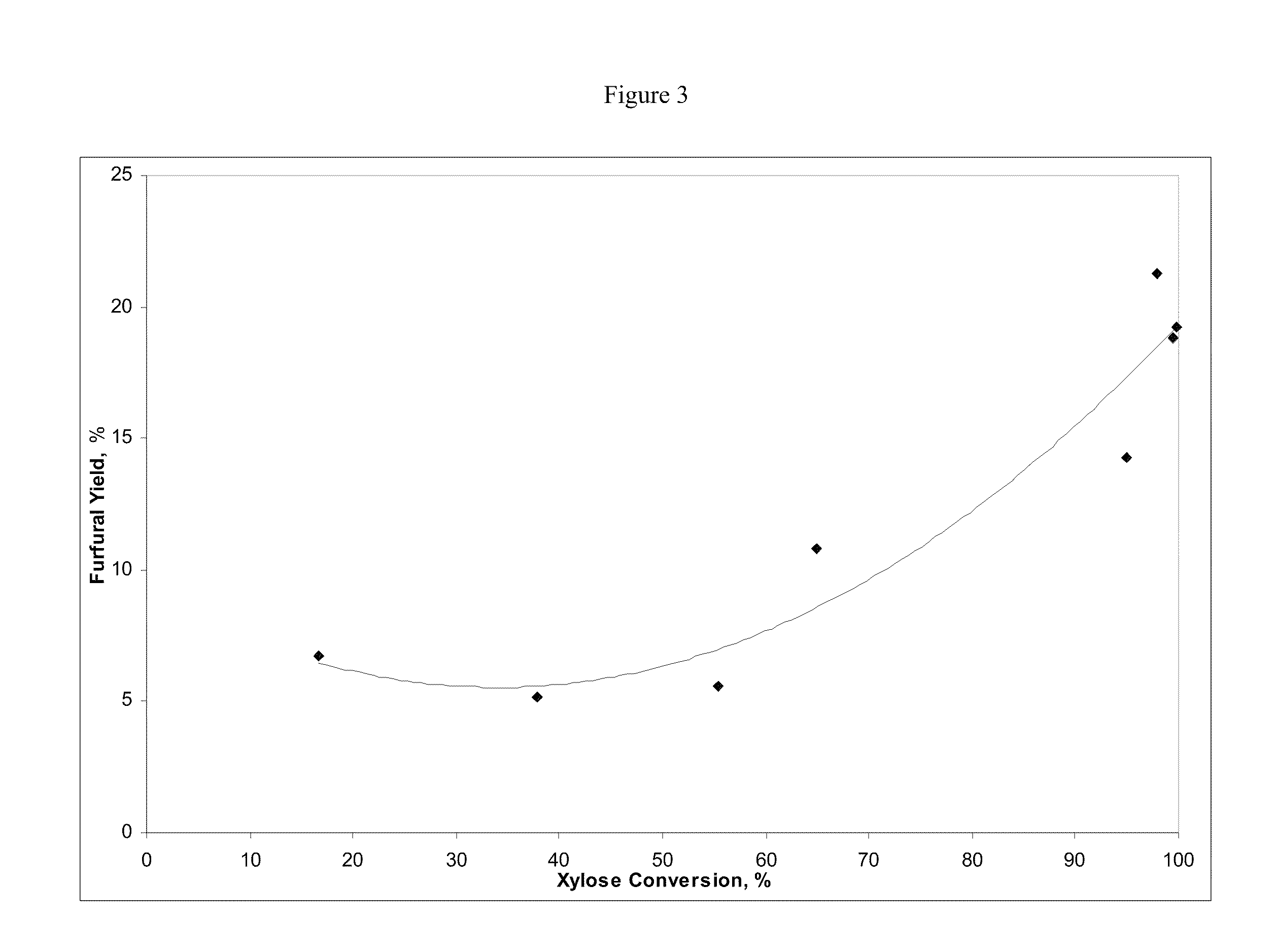Solvo-thermal hydrolysis of xylose
a technology of xylose and hydrolysis method, which is applied in the direction of chemical/physical/physical-chemical processes, chemical apparatus and processes, organic chemistry, etc., can solve the problems of low productivity, many problems reported for the production of furfurals from xylose, and a higher concentration of furfurals,
- Summary
- Abstract
- Description
- Claims
- Application Information
AI Technical Summary
Benefits of technology
Problems solved by technology
Method used
Image
Examples
example 1
Solvo-Thermal Conversion of Xylose to Furfural
[0047]Xylose used in Examples 1-3 was purchased from Aldrich. Water was purified using a Barnstead NANOpure Infinity® purification system. CO2 was acquired from Airgas.
[0048]FIG. 1 illustrates the use of a continuous reaction process. Xylose and water were added to tank T01 and mixed well. The gas cylinder contained liquid carbon dioxide. The xylose, water and carbon dioxide from two tanks T-01 and T-02 were pumped by High Pressure Pumps (P 01& P 02). In this setup, the aqueous xylose solution (T01) and sub-critical or near-critical water (T02) were contacted by injection into the reactor. There was continuous monitoring of reaction temperature, pressure, and time. Reaction occurs at predetermined pressure and temperature conditions for desired residence time. After exiting, the stream was passed through a cooled water bath (H 03) to bring it to a necessary cooling temperature. Furfural was separated from the mixture using supercritical ...
example 2
Xylose Conversion and Furfural Yields
[0051]FIG. 2 shows xylose conversion in water plotted against temperatures of 230° C. and 300° C., with zero residence time. Xylose conversion increased with the increase in the temperature and attained above 90% conversion at 270° C. Furfural yield also increased with xylose conversion as shown in FIG. 3. Furfural yield increased with increasing residence time from 4 to 20 s which is demonstrated in FIG. 4. The same trend was observed in a plot of the furfural selectivity versus xylose conversion (FIG. 5). The furfural yield also increased with temperature, which is shown as percentage of original xylose in FIGS. 6 and percentage of converted xylose in FIG. 7. The yield and selectivity both increased with increasing xylose conversion, even as the xylose conversion neared 100% (FIGS. 3 and 5).
example 3
Xylose Conversion with CO2
[0052]FIG. 8 shows data for xylose conversion with CO2 addition. Addition of carbon dioxide increased furfural yield as indicated in FIG. 8 and compared to FIG. 9. Effect of carbon dioxide addition on furfural yield was also higher at higher temperatures. Furfural yield and selectivity increased with the addition of CO2, indicating an enhancement of the desired reactions. The effect of CO2 was investigated further in additional experiments with enough and excess CO2. The results of these experiments revealed no significant differences between the two conditions for a given temperature. Furfural yield and selectivity both increased with residence time, with the higher CO2 concentration yielding sharper increases.
PUM
 Login to View More
Login to View More Abstract
Description
Claims
Application Information
 Login to View More
Login to View More - R&D
- Intellectual Property
- Life Sciences
- Materials
- Tech Scout
- Unparalleled Data Quality
- Higher Quality Content
- 60% Fewer Hallucinations
Browse by: Latest US Patents, China's latest patents, Technical Efficacy Thesaurus, Application Domain, Technology Topic, Popular Technical Reports.
© 2025 PatSnap. All rights reserved.Legal|Privacy policy|Modern Slavery Act Transparency Statement|Sitemap|About US| Contact US: help@patsnap.com



